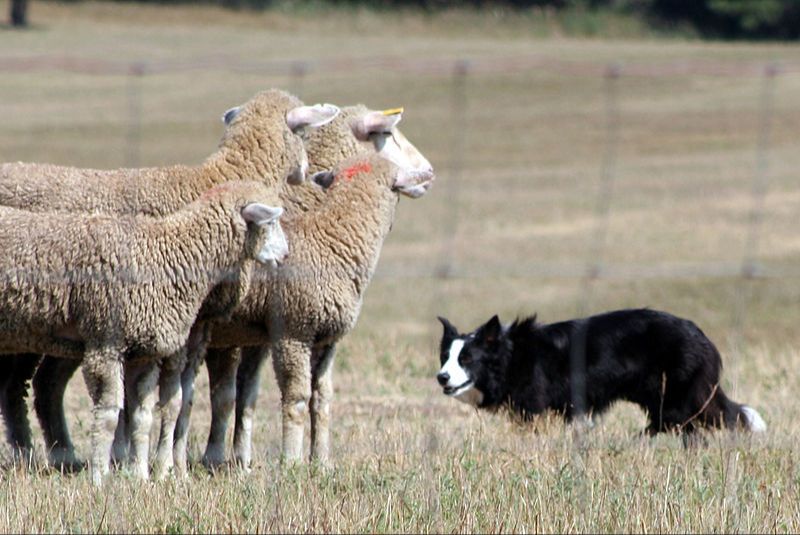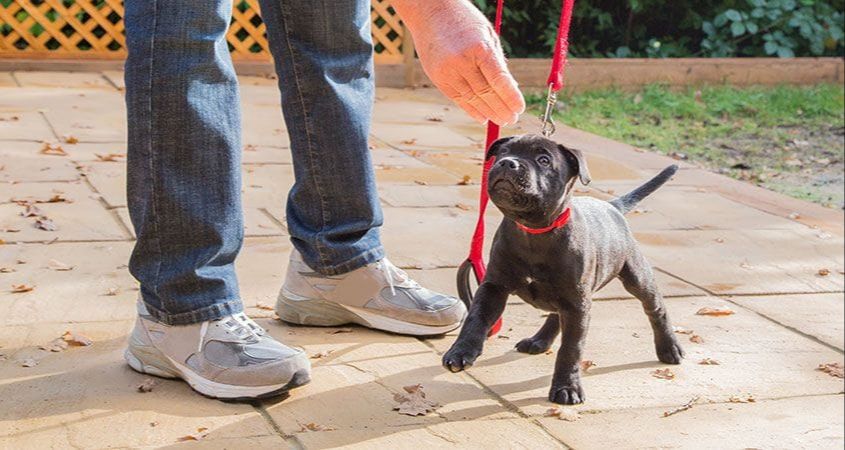Introduction
The idea of introducing a vulnerable new kitten to an energetic dog can seem daunting for pet owners. Will the dog’s natural hunting instincts take over, putting the kitten’s safety at risk? Or can dogs and cats learn to get along and coexist peacefully? This article analyzes dogs’ instincts toward kittens and provides tips for safe introductions and continued supervision of dog-kitten interactions.
Dogs’ Instincts Toward Kittens
Dogs have strong predatory instincts and may see cats and kittens as prey. This prey drive is a natural instinct in dogs, especially certain breeds that were historically bred for hunting [1]. When cats run from dogs, it can trigger their chase response. Additionally, dogs are curious animals and may want to investigate or play with a kitten, especially if they are not socialized. Their size difference means dogs can accidentally harm kittens during this type of interaction. However, predatory behavior toward kittens is not inevitable in all dogs.

Warning Signs of Aggression
Some key warning signs that indicate a dog may react aggressively toward a kitten include:
Growling or snarling are clear signs a dog is feeling threatened. As per the Dog Wizard https://thedogwizard.com/blog/how-to-stop-dog-aggression-towards-cats/ growling demonstrates the dog is unhappy with the situation and may progress to more aggressive behavior if the triggers remain present.
A tense, stiff body posture also signals potential aggression. As noted by Rover, signs like a rigid stance, upright tail, and ears pressed back https://www.rover.com/blog/how-to-stop-dog-aggression-towards-cats/ indicate a dog who is poised to attack.
Intense staring or glaring at the kitten is another warning sign, especially if accompanied by a still, rigid body posture. As per Catster https://www.catster.com/guides/how-to-tell-if-dog-will-be-aggressive-towards-cats/ fixing the kitten with an unwavering stare indicates the dog is in “predator mode” and ready to give chase.
Paying attention to these body language cues can help prevent aggression by allowing intervention before the dog attacks.
Differences Between Breeds
Certain dog breeds are known to have higher prey drives toward small animals like cats and kittens compared to other breeds. This has to do with the dogs’ original purposes and instincts. Herding breeds like border collies and Australian shepherds have strong chasing instincts because they were bred to herd livestock. Sighthounds like greyhounds and whippets were bred to spot prey from a distance and chase them. Guard dog breeds like Dobermans and Rottweilers can also have high prey drives and may see a new kitten as an intruder.

According to Dog Breeds That Are (Usually) Good With Cats, herding breeds have strong chasing instincts but are usually fine with cats they are raised with. However, they may instinctually nip and chase new cats. Sighthounds and terriers often have high prey drives and may see cats or kittens as something to chase. Guard dogs can also be protective of their home and family and view a new kitten as a threat. So proper introductions and training are essential.
Overall, herding breeds, sighthounds, terriers and guard dogs tend to have higher prey drives compared to retriever breeds like Labradors and Goldens. But early socialization, training, and careful supervision when introducing dogs to kittens can make cohabitation safe and peaceful.
Proper Introductions
When introducing a dog to a new kitten, it’s important to take it slowly and set them up for success. According to the Animal Humane Society, you should keep the dog on a leash during initial interactions so you can easily control their behavior.
Use positive reinforcement techniques, rewarding with treats and praise when the dog remains calm and gentle around the kitten. This will help the dog associate good things with being near the kitten.
Allow the dog to cautiously investigate the kitten while you supervise. Let them become accustomed to each other’s scent. But don’t allow too much interaction at first, and separate them if the dog seems overly stimulated.
With time, patience and positive associations, the dog and kitten can learn to co-exist peacefully and safely.
Supervision
It is crucial that you do not leave a dog and a kitten alone unsupervised, especially during the initial introduction period. Dogs and cats communicate differently, and a dog could unintentionally hurt a kitten during play or react instinctively to fast kitten movements. According to the RSPCA, “If you are not sure, continue to supervise directly when you are at home or physically separate them when you are not at home.”
You should always monitor all interactions between your dog and new kitten very closely. Kittens are small and fragile, so a dog could injure them even without meaning to. Ensure you are watching them when they are together and do not leave them alone until you are 100% confident your dog is gentle and knows how to interact appropriately with the kitten.
As recommended by Comfort Zone, “These introductions need to be done slowly, and each one should be supervised.” Take introductions step-by-step and never rush the process. It’s better to be safe and patient so both animals stay comfortable.
Training
One of the most important ways to teach a dog to safely interact with a kitten is through training. Specifically, impulse control training and the ‘leave it’ command are critical. As the Wag Walking article explains, impulse control training helps dogs learn to control their impulses around kittens and resist the urge to chase. This involves reward-based training where the dog is rewarded with treats for calmly observing the kitten from a distance, without reacting.

Similarly, teaching a strong ‘leave it’ cue, where the dog disengages from the kitten on command, is very important. As suggested in a Reddit thread, the ‘leave it’ command gives the owner a way to immediately stop any inappropriate behavior toward the kitten. With patience and consistency using positive reinforcement methods, dogs can learn to resist their instincts and interact safely with kittens through training.
Risk Factors
Some factors can increase the risk of a dog harming a kitten. Small kittens are most vulnerable since they are tiny, move quickly, and their high-pitched sounds can trigger a dog’s prey drive. According to Oakland Animal Services, kittens’ small size and tendency to run and play excite some dogs’ instincts to chase. Dogs bred for hunting may be more likely to view kittens as prey due to their high prey drive.
Without slow and proper introductions, dogs may not learn to read a kitten’s body language or view them as a family member instead of prey. As experts on Quora note, a lack of acclimation means the dog continues to see the kitten as an intruder, raising the chances of aggression.
Safety Precautions
There are certain precautions you can take to help keep kittens safe when introducing them to dogs in your home. One important precaution is to provide kittens with space that is separated from the dogs, especially in the initial introduction period. As recommended in this article from TheCattopia, having a dedicated “catio” or kitten play area that is physically separated from the dogs can prevent issues and give the kittens a safe zone.

It’s also a good idea to have distraction toys available for the dogs when they are first interacting with a new kitten. As noted in this PetProSupplyCo article, having chew toys or food puzzles for the dogs can keep them occupied and less focused on the new kitten. Proper supervision is still required, but having distractions for the dogs can help ease introductions.
Taking these basic precautions of providing separate spaces and distractions for dogs can go a long way in keeping kittens safe and setting up initial dog-kitten interactions for success.
Conclusion
To summarize, most dogs have the capacity to get along with cats and kittens. While predator instinct is innate in dogs, this behavior can often be managed through obedience training, proper socialization, supervision, and other safety precautions like keeping kittens in a safe room or crate when unsupervised.
That being said, certain dog breeds and individual dogs may have higher prey drives that need to be carefully managed. Aggression toward cats is also more likely in dogs who lack proper socialization. But the majority of family dogs can learn to coexist peacefully with feline friends when the relationship is properly introduced and maintained.
With training, patience and vigilance, you can minimize risks and help dogs and cats develop a friendly rapport. Start with slow supervised interactions, provide separate spaces, use positive reinforcement training, and take action if concerning behaviors arise. By taking the proper precautions, most dogs and kittens can become the best of pals.